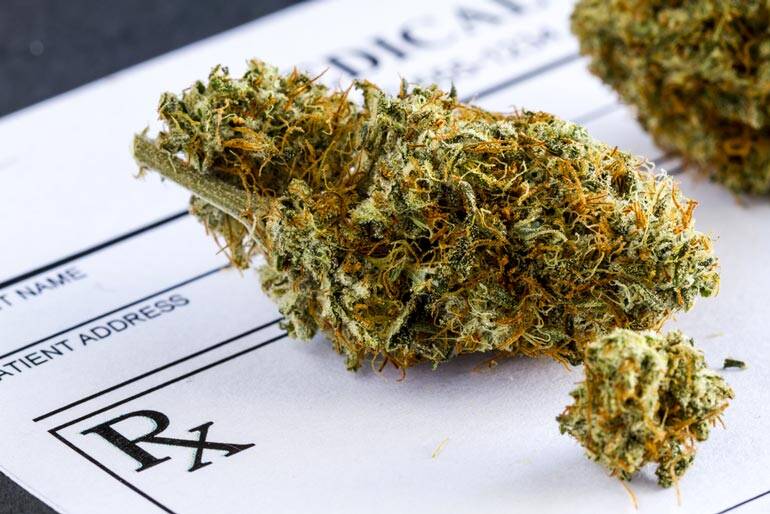Start 14-Day Trial Subscription
*No credit card required

Medicinal Uses of Cannabis Throughout History
Find relief from severe symptoms and pain with medical cannabis. Discover how cannabis interacts with the body's endocannabinoid system, its historical use, and why it's a valuable option for complex medical conditions.a
You can find many videos online of someone’s body shuddering with convulsions or tics. They can't control their movements, and the constant muscle contractions cause terrible pain. However, after that person inhales cannabis smoke several times, their entire body is enveloped in calmness and their convulsions go away. – as does the pain. This is an illustration of how cannabis can alleviate severe symptoms in complex diseases when alternative medicines prove less effective or result in unwanted side effects. But why are there so many prejudices against medical cannabis today? In this article from HighTHC Shop, we'll explain its how cannabis works, its evolution throughout history, and why we shouldn't avoid its use in treating difficult medical conditions.
Why cannabis has medical effects
Our body has an endocannabinoid system (ECS). It is a network of chemical signals and cellular receptors in our brain and body. There are two types of "cannabinoid" receptors.
CB1 receptors in the brain control the levels and activity of most other neurotransmitters. If necessary, they "adjust" the systems and functions of our body – such as hunger or temperature.
To stimulate these receptors, the body produces endocannabinoid molecules. The secret is that these molecules and cannabis ones have a similar structure.
CB2 is located mainly in our immune tissues (bone marrow, thymus, spleen, mucous membranes, tonsils and skin). They control immune functions and have an impact on the development of intestinal inflammation and pain. Stimulation of these receptors is not associated with a feeling of being high (unlike CB1), so it has a huge potential for creating medicines.
When CBD (the non-high-inducing element of cannabis) enters the body, it acts on the ECS and helps reduce pain, inflammation, stress and more. It also relaxes the muscles, has few side effects and is not addictive, unlike many other drugs with similar properties.
How cannabis was used in ancient times
The healing properties of cannabis were known at least 4500 years ago in China. There, it was included in the list of 50 fundamental herbs, i.e. basic remedies.
Egyptian manuscripts, which are about 2500 years old, describe the use of cannabis to reduce fever and treat pain, including painful uterine contractions.
In Arab countries, it was used to reduce fever, anesthetize patients and relieve epileptic seizures.
Cannabis was also widely used in India, where it was used to treat sleep and digestive disorders and stimulate appetite and mental activity. Its use in India is probably how cannabis to Europe and North America.
How cannabis came to Western medicine
The honor of introducing cannabis to Western medicine is attributed to Irish doctor William O'Shaughnessy. In the 1840s, he became a professor of chemistry at the Calcutta Medical College and joined the British East India Company. There, he studied how cannabis affects animals and humans, and upon returning home, he published his research on its benefits in medicine. His findings (and numerous plants he brought back with him) helped popularize cannabis as a medicine in Europe and North America.
The fight for cannabis legalization
Almost at the same time, the first concerns about cannabis and its use for getting high were raised. The persecution became particularly prominent in the 1900s, although cannabis remained legal worldwide until 1928. At that time, a U.S. official hilariously claimed that "satanic jazz and swing are the results of marijuana use."
And in 1936, the propaganda film Reefer Madness was released, which pathetically and rather ineptly points to marijuana as the source of almost all troubles and sins.
A part of society did not understand the different varieties and effects of cannabis, so they demonized all its types and declared them harmful and obscene.
Because of these, access to CBD medicines was constantly shifting throughout the twentieth century, and many people were left without quality medicine.
Fortunately, many countries are now reconsidering their attitude to cannabis and returning it to the lists of recommended medicines, although it is often still not easy to get. CBD can be used for:
- epilepsy
- migraines
- cancer
- Alzheimer's disease
- Parkinson's disease
- inflammatory bowel diseases
- HIV/AIDS
- glaucoma
- PTSD
- anorexia
- chronic pain
- nausea, etc.
This data is supported by many clinical studies and shows that CBD’s side effects are infrequent and minor, such as nausea or fatigue.
Where to buy cannabis with high CBD and THC
If you're looking for medical or recreational cannabis, HighTHC shop is the place to go. Here, you can find CBD cannabis, THC flowers, shakes, edibles, and hash. Check out some of the items here: https://highthc.shop/product-category/shake/. Pay attention to the descriptions, the company explains what effect, smell and taste the products have.
HighTHC shop delivers products across the U.K. To preserve your anonymity, we accept payment only in cryptocurrency. We are supporters of THC and believe that it helps in self-development and gives access to higher levels of thought, creativity and feeling.



